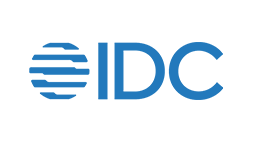Enable end-to-end automation of complex and content-centric business processes. Leverage integrated robotic process automation to centrally manage agile business rules and streamlining processes. Furthermore, respond to unanticipated scenarios using platform’s dynamic case management capabilities.
What can you do with Newgen Digital Process Automation Solution?
Handle complex and mission-critical use cases
DPA system having BPM at their core should be designed to handle sophisticated mission-critical processes that span across enterprises. With the growing business complexities, organizations need platforms that provide a wide array of functionalities including but not limited to, case management, complex decision and logic support, integrations, robotic process automation (RPA), content management, process optimization, document automation, embedded AI/ML, and many more
Deliver large number of digital applications that handle unique, less complex, and wide use cases
With digital being an imperative, organizations are also demanding larger number of simpler applications and workflows that can handle unique and situational requirements spanning across departments and teams. These tools should offer simple-to-use development experience along with governance capabilities that enable their adoption across a wider range of developer personas
Provide general-purpose low code capabilities
In addition to automating applications that involve critical processes and workflows, organizations are also looking to develop applications that are data-driven. As a result, organizations now expect DPA system to offer capabilities beyond workflows to develop modern user interfaces, web portals, mobile apps, conversational interfaces, and others. These platforms should also offer intuitive developer experience to a wide range of developer personas to rapidly deliver applications.
How does Newgen solve for your DPA needs?
Rapid Application Development
Rapidly design, develop, and implement powerful enterprise-grade applications leveraging the power of AI and GenAI for web and mobile with easy point-and-click configurability while leveraging a robust low-code platform. Create domain-rich solutions to cater to dynamically evolving business requirements.
Business Process Automation
Automate complex, content-centric, enterprise-wide business processes while centrally managing agile business rules and streamlining processes through integrated robotic process automation. Furthermore, respond to unanticipated scenarios by leveraging the platform’s dynamic case management capabilities
Contextual Engagement
Capture, manage, and consume content generated in the context of business processes by leveraging AI and GenAI. Gather context from various sources and provide personalized, GenAI-driven communications to customers at multiple touchpoints.
Continuous Improvement
Continuously optimize business processes to enhance customer experience, improve employee productivity, and reduce operational costs with process analytics and intelligence, system-based recommendations, real-time reporting, and monitoring
Lead with an Industry-recognized Platform
Organizations looking for an advanced content platform capable of scaling for heavy workloads and that need deployment flexibility and advanced automation and AI capabilities should consider Newgen.
The Forrester Wave™: Content Platforms, Q1 2025

Customers





















































































